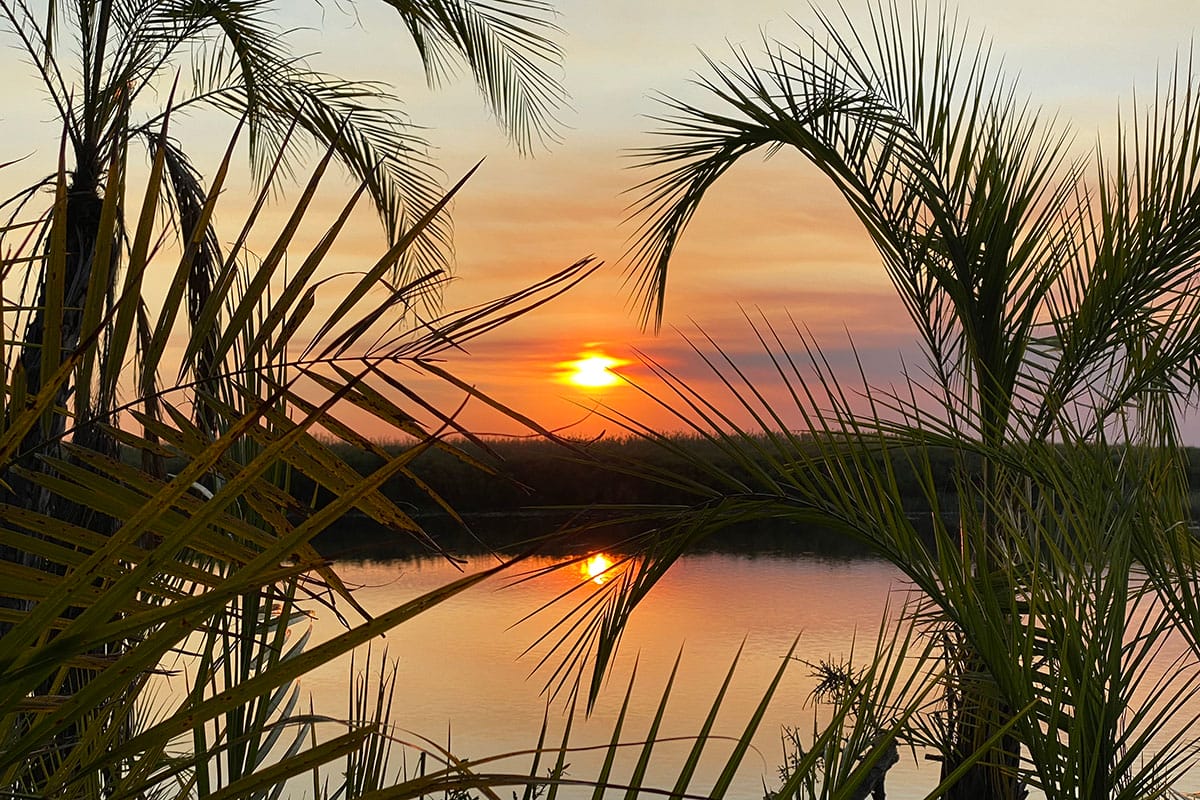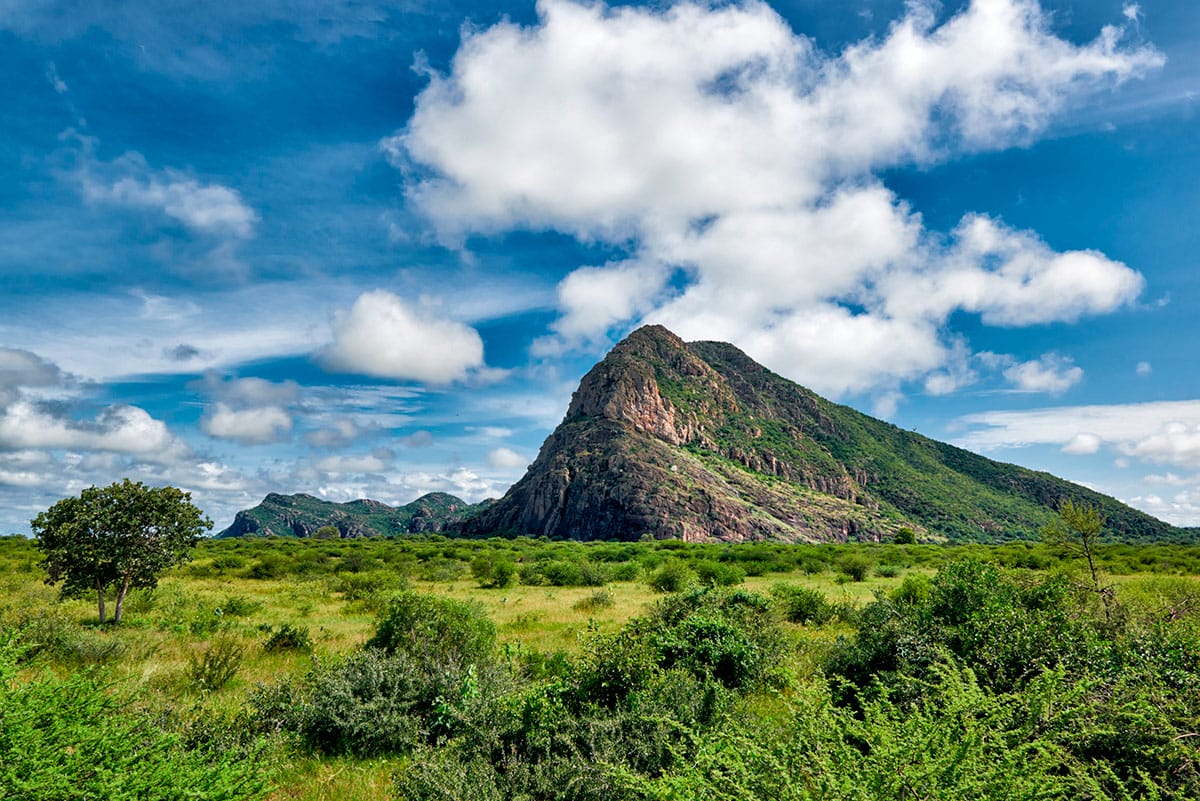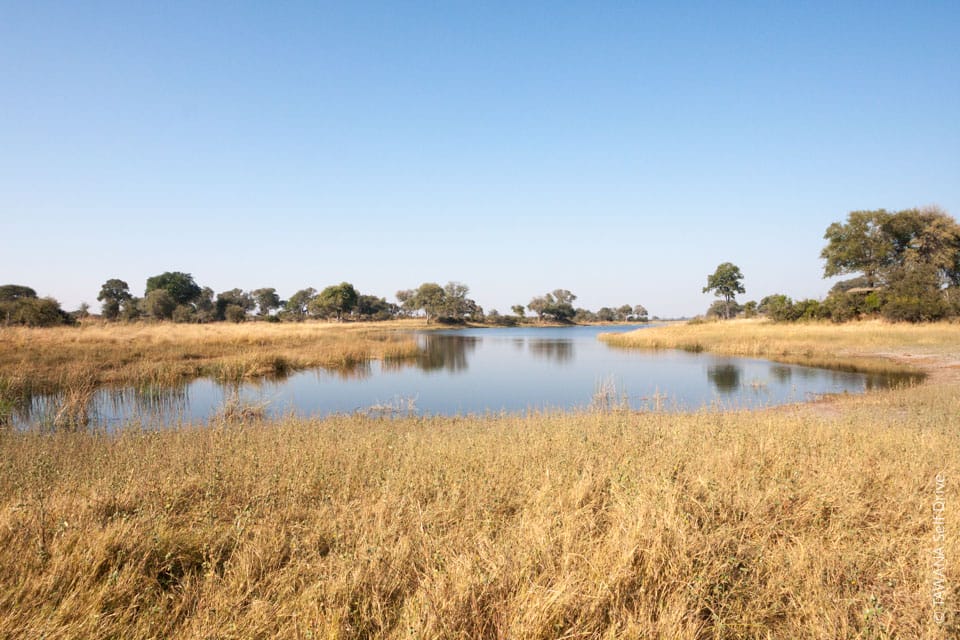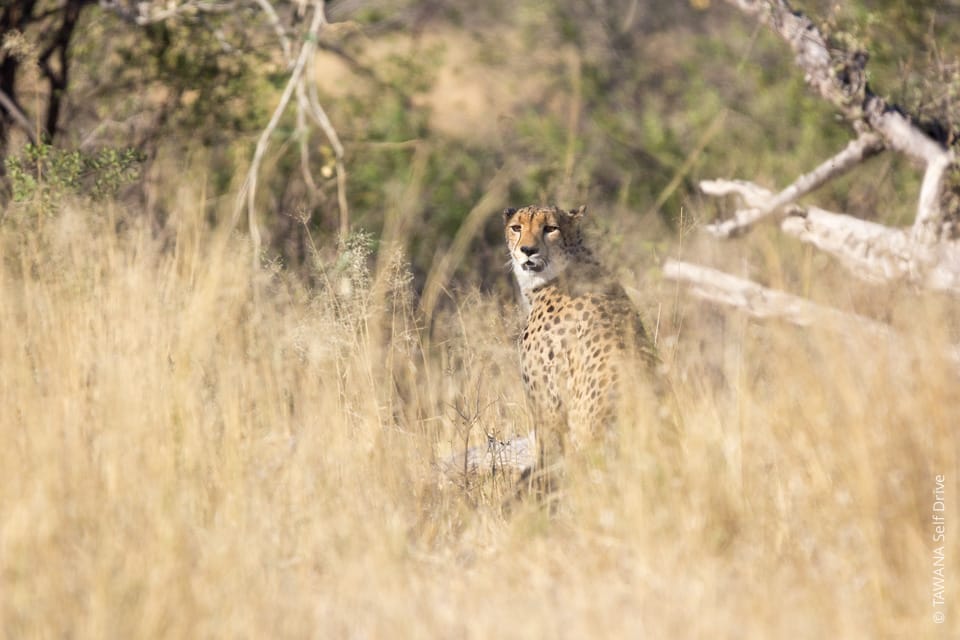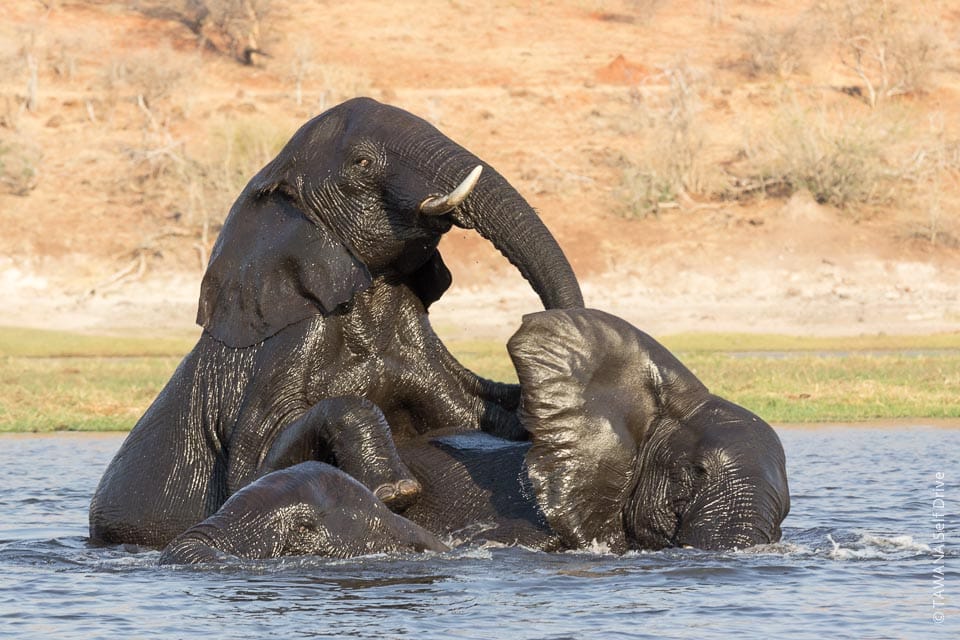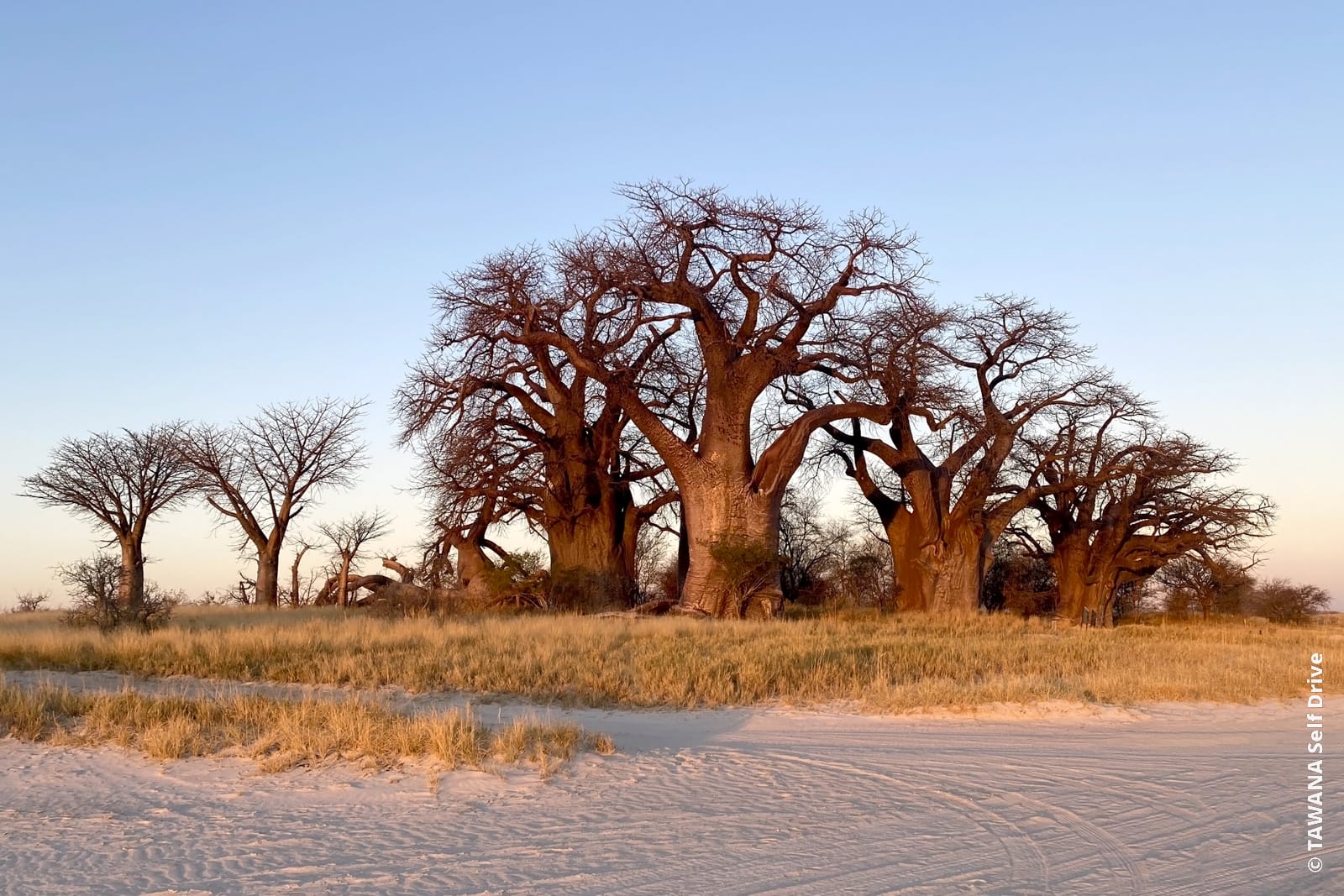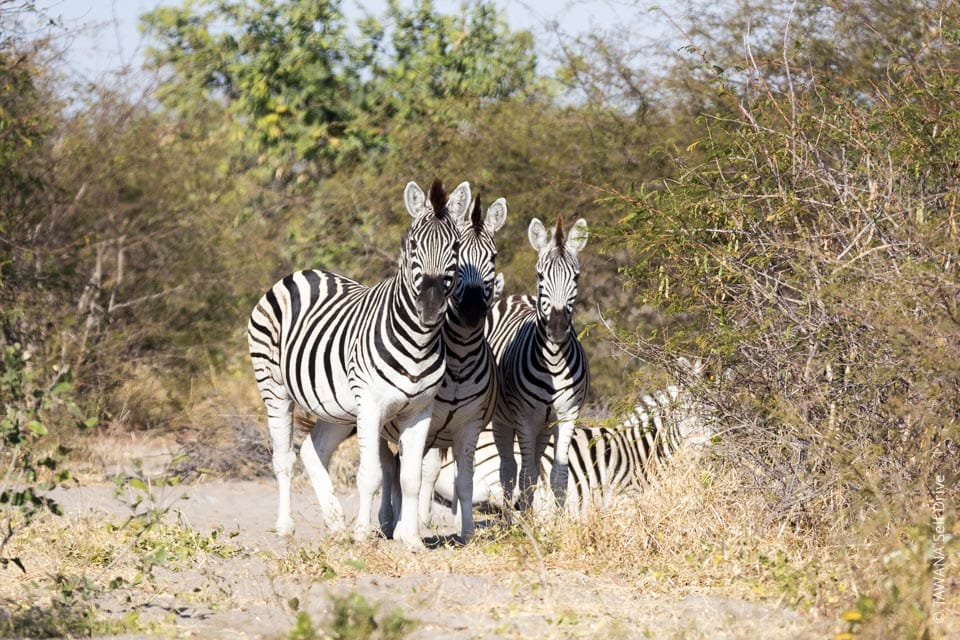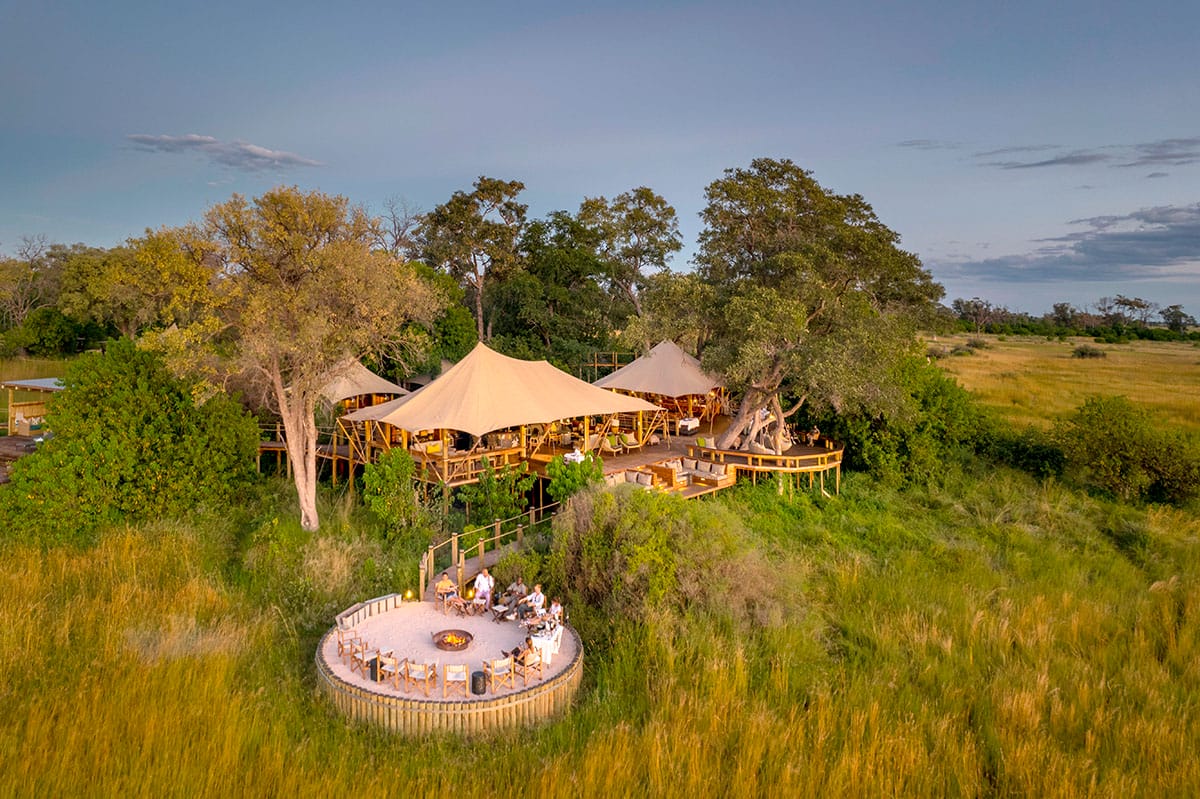The Birds Route, an amazing 4×4 self-drive trip through Botswana and Namibia
The Bird Route is a journey that takes you through the idyllic marshes of Namibia and Botswana, along the Kwando and Okavango rivers, and continues into the depths of the Kalahari, where you can explore the vast expanses of Makgadikgadi.
From Rupara to Mahango, the Zambezi region reveals lush landscapes that are home to a wide variety of wildlife and a myriad of colourful birds. With its wonderful papyrus plants lining the Okavango River, the Panhandle offers a glimpse into the aquatic world of the Delta, which can be explored all the way to Khwai. In stark contrast, the arid desert of the pans is home to the longest zebra migration on the African continent, which you can follow all the way to Chobe National Park.
Maun
Kasane
Nxai Pan National Park
Boteti River
Chobe National Park: River Front
Victoria Falls
Nata
Gweta
Kongola
Divundu
Shakawe
Khwai Concession
Okavango Delta Concessions
SUMMARY
Destination: Botswana, Namibia
Duration: 14 to 21 days
Starting point: Maun or Kasane
Accommodation: Camping and/or Lodge
Zambezi River, Namibie
STEP BY STEP
Stretching for 70 km, this region of Botswana which precedes the Okavango Delta consists of a deep channel where the hippos live happily, lagoons covered with water lilies and marshes dressed in papyrus and reeds where birds roam in abundance. For fishing enthusiasts, the panhandle is one of the best places to catch the famous tiger fish.
GUMA LAGOON AND SHAKAWE
Between Shakawe and Guma Lagoon, life is a long quiet river punctuated with various points of interests to include in the course according to its preferences.
Nxamaseri
The environment of this small village deserves a visit. Here lies the canal of the same name and splendid floodplains covered with a carpet of impeccable grass where only a few palm trees break the horizon. The channel lies north of the point where the Okavango river begins to divide into the delta. While the wildlife is scarcer outside hippos and crocodiles, birds abound, and a colony of carmine wasps may be observed from September to December.
Tsodilo Hills
Listed as a UNESCO world heritage site, the Tsodilo hills are home to more than 4,500 rock paintings on a small area. It is a magical and fascinating place to explore, promising beautiful hikes.
Guma Lagoon
Located along the banks of the river on the northwest side of the Okavango delta, Guma Lagoon camp is a true paradise for fishermen and birdwatchers but also the perfect place to relax and enjoy wonderful mokoro rides, the traditional canoe which was the mode of transport for the first inhabitants of the Okavango, the Bayei and Banoka. A must-do in Botswana!
GOOD TO KNOW
Accommodation: The road along the Panhandle is punctuated by well established lodges and camps that provide accommodation at all prices.
Supplying: Shakawe has ATM’s, supermarket’s and gas stations. Sepopa and Seronga will provide basic supplies.
Roads: The Panhandle is quite easy to access. There is a main tared road between Shakawe and Maun then sand tracks allow you to reach the banks of the river. Access to Guma Lagoon can be a bit technical during the dry season but camp support can be organized from Etsha.
The Caprivi Strip, now called Kavango-Zambezi, is a narrow strip of land belonging to Namibia that separates Botswana from Angola. Bordered by rivers, it offers lush vegetation and a natural environment conducive to the development of abundant wildlife and birdlife. The population is also denser than elsewhere, and the roads are dotted with numerous villages where travelers are often warmly welcomed.
BWABWATA NATIONAL PARK
Covering the narrowest and longest strip of Caprivi, Bwabwata includes the former Caprivi park and the Mahango reserve. After being occupied by the south African army until independence in 1990, this region began to be managed as a protected area despite the presence of its 5000 inhabitants.
That is why the management of this park integrates the needs of the local population and has led to the creation of various areas including the conservation area to the west along the Okavango river (Mahango and Buffalo core) a central multi-use area and a conservation area to the east ( Kwando core).
Bwabwata’s landscapes range from vast floodplains, banks of lush vegetation to drier woodland with large baobabs. Bwabwata is an obligatory passage to reach Angola and it is home to a very high concentration of elephants but also buffaloes and antelopes, attracting a relatively large population of predators: lions, leopards, hyenas and wild dogs. Along the rivers hippos and antelopes proliferate as well as the sitatungas, reedbucks or groups of Lechwe are easily encountered.
Bwabwata is also a hotspot for ornithology and will delight all the bird lovers with the presence of the skimmers, parrots, narina trogons and the rare pel’s fishing owl.
Buffalo Core
Buffalo Core Area is the part of Bwabwata with the highest density of mammals. Large herds of elephants, sable antelopes, and roan antelopes gather along the riverbanks, while buffalo and kudu are also particularly well represented, supporting a significant lion population.
Mahango Core
On the other side of the river, Mahango is a small reserve that is very popular with birdwatchers.
GOOD TO KNOW
Accommodation: Along the Okavango river, lodges, bush camps and campsites follow one another from Divindu to Mohembo.
Supplying: The small town of Divundu has a small supermakets, fuel station and ATM machines.
Roads: The main access roads are paved, including the transit road crossing Bwabwata Park towards Kongola. Safari tracks are generally gravel unless you venture deep into the interior of the two sections of the park, where deep sand takes over.
BWABWATA NATIONAL PARK
On the eastern side of Bwabwata, the Susuwe Triangle is the region with the richest fauna and birdlife. This area is impressive for its diversity of wildlife and its magnificent views of a typical wetland environment. Horseshoes is a must-see. This horseshoe-shaped lagoon attracts countless elephants who come to drink and bathe every afternoon, offering a spectacle worthy of the banks of the Chobe!
MUDUMU NATIONAL PARK
The Mudumu Reserve is located north of Rupara Park and has a similar environment to its neighbour. Its main attraction remains the banks of the Kwando River, where elephants abound as they migrate in spectacular numbers between Botswana, Zambia, Angola and Zimbabwe.
Its landscape of floodplains and forest also attracts buffalo, lions, leopards, giraffes and all kinds of antelope, including the rare sitatunga. Its canals are home to hippopotamuses, crocodiles and otters.
NKASA RUPARA NATIONAL PARK
Nkasa Rupara is the Namibian reserve closest to Botswana, bordered by the Linyanti River to the east and the Kwando River to the west. It stands out as Namibia’s largest protected wetland. Its landscapes are mainly made up of channels and wooded islands, the largest and most iconic of which are Nkasa and Lupala. During the dry season, these islands are accessible by road but are once again surrounded by water during the rainy season.
KATIMA MULILO AND THE ZAMBEZI RIVER
Located between the Zambezi and Chobe rivers, the easternmost part of Caprivi consists of wetlands, alternating between floodplains, islands and canals. This environment, similar to that found in the Okavango Delta, is no longer really inhabited by large mammals. However, the birdlife is spectacular, and you can observe scissor-bills nesting on the sandy islands of the Zambezi, kingfishers of all species, and spectacular colonies of carmine bee-eaters.
GOOD TO KNOW
Accommodation: The banks of the Kwando River along the C49 are dotted with several establishments offering different accommodation options: camping, glamping or comfortable chalets. Bwabwata National Park is home to a luxury lodge and a few campsites, as are Mudumu and Rupara.
Supplying: Fuel, a small supermarket and ATM are available in Kongola, but larger supplies can be purchased in Katima Mulilo, the regional capital.
Roads: The main access roads are tarred, including the C49. In the parks, the tracks are particularly sandy.
Located in north-eastern Botswana, the history of Chobe National Park began in the 1930s with the idea of creating a reserve to protect animals and attract visitors. 24,000 km² were then closed to hunting before an invasion of tsetse flies led to the project’s failure. After the Second World War, the Chobe district and its forests developed around timber exploitation, and a sawmill was set up in Serondela. The desire to make Chobe a protected area resurfaced in 1957 and led to the creation of a national park 10 years later after all human activities had been dismantled. In the 1980s, the park expanded with the addition of the Mababe and Nogatsaa triangles to reach its current size.
Today, Chobe National Park is one of the most popular in Africa, thanks to the exceptional density and variety of animals found across four ecosystems that make up the richness of the area. This itinerary allows you to discover the most popular of all: the River Front, located on the banks of the Chobe River.
CHOBE RIVER FRONT
The Chobe River Front is characterised by lush vegetation that attracts large gatherings of animals during the dry season. The herds of elephants and buffalo are spectacular, and the region is home to a beautiful population of lions and leopards, allowing visitors to observe four of the Big Five, Africa’s most sought-after animals.
From the land, immersion in the animal kingdom is remarkable, and it is not uncommon to find yourself surrounded by elephants, observing a hunting scene or catching a glimpse of a leopard on the branch of an acacia tree. At River Front, encounters and sunsets will always be unforgettable, and this stop is one of the most eagerly awaited on this self-drive 4×4 trip!
GOOD TO KNOW
Accommodation: The River Front region is accessible from Kasane in the east or from Muchenje in the west, where campsites, self-catering chalets, bush camps and lodges are available. Only one lodge and the Ihaha campsite are located inside the park.
Supplying: Kasane and the Muchenje fuel station to the west of the
Roads: Up to Serondela, the tracks are mainly sandy and can be quite deep in places. After Serondela, the ground is harder but also more uneven.
The Nxai Pan and Makgadikgadi National Parks consist of similar landscapes, alternating between basins and shrubby plains ideally located on the migratory routes of large herbivores.
Although they are like brother and sister, each park offers a complementary safari experience between the Boteti River, which attracts zebras, wildebeests and elephants during the dry season, and the Nxai pans, a veritable oasis of greenery appreciated by the same herds during the wet season. Between these two environments and in all seasons, predators find their place, watching for the right opportunity at the river’s edge or around waterholes.
NXAI PAN
Nxai Pan National Park is home to the famous Baines Baobabs, a small natural gem dominating the flat landscape of plains and pans that characterises this park. Discovered in the 19th century, they were immortalised by explorer Thomas Baines in one of his paintings, such was the remarkable beauty of the place. Its magical atmosphere is revealed in full at sunrise, when the sun’s rays bathe the tree trunks in red, contrasting perfectly with the pristine white of the Kudiakam pan.
While the baobab region is not very popular with animals, the Nxai and Kgama-Kgama pans are home to a permanent fauna consisting of lions, giraffes and cheetahs, as well as species adapted to more arid environments such as springbok, bat-eared foxes and jackals. It is also a crossing point for migratory animals, which flock to seasonal waterholes as soon as the first rains arrive. At this time of year, it is possible to see thousands of zebras and wildebeests, as well as large herds of springboks and oryx.
During the dry season, the wildlife in Nxai is more sporadic than in other parks in Botswana, but there is a good chance of seeing cheetahs all year round, and the central artificial waterhole continues to attract many animals.
BOTETI RIVER
The Boteti River runs along the western edge of Makgadikgadi National Park. It is fed by the Okavango floods and is a crucial source of water for animals living or migrating in this desert area, which replaced a huge prehistoric lake. As in Savuti, it remained dry for many years, leaving only a few permanent pools here and there. With water returning since 2009, wildlife is once again thriving in this magnificent setting, offering visitors the chance to observe the traditional fauna of the African savannah: elephants, giraffes, zebras, lions and a myriad of birds.
Venturing a little deeper into the park, you will discover an environment in stark contrast to the green banks of the river. The Ntwetwe pan is one of the largest in the region and resembles a veritable desert during the dry season. Its cracked expanse is strikingly white and attracts specific wildlife adapted to these arid conditions, such as ostriches, oryx, meerkats, and even the very elusive brown hyena.
GOOD TO KNOW
- Accommodation: The Makgadikgadi and Nxai National Parks each have a public campsite, as well as isolated sites at Baines Baobab. Mobile safari operators work at specific sites in both parks. There is a high-end lodge at Nxai Pan and various options along the Boteti River on the edge of the park. Lodges and campsites are available in Nata and the surrounding area.
Supplying: Nata has a small supermarket and several petrol stations. There are a few convenience stores in Gweta and a fuel station.
Roads: Tarred road to the entrance of the two parks, then sandy tracks that are generally very deep once you have passed the gates.
Departing from Maun, you can reach the village of Khwai by 4×4 to explore the Khwai concession and the northern section of Moremi on a self-drive tour, or fly to a lodge on a private concession in the Okavango Delta.
KHWAI COMMUNITY CONCESSION
The Khwai River flows through a mosaic of savannahs and marshes teeming with wildlife. Lions hunt buffalo here, sometimes in spectacular confrontations. Leopards rest on tree branches. Hyenas show up in the early morning. Elephants gather around waterholes in the afternoon. And hippos keep watch over your nights, laughing cheerfully. A true microcosm of wildlife awaits you in this magnificent corridor, ideally located between Moremi and Chobe.
OKAVANGO PRIVATE CONCESSIONS
The private concessions in the Delta can only be reached by plane from Maun, which will give you the opportunity to observe the meandering Delta and perhaps catch a glimpse of some large herds. Once there, a luxury experience awaits you: the comfort of the lodges, perfectly integrated into the natural surroundings, and the beauty of the location are unrivalled, with a team always on hand to ensure you have a truly unforgettable stay.
Spending a few days in the Okavango lodges remains a privilege that comes at a high price, but the delta is a magical place, completely unspoilt, with breathtaking natural beauty, far from mass tourism and close to incredibly free wildlife. It will probably be the highlight of your trip!
A visit to Victoria Falls in Zimbabwe can easily be included in the birding route: on arrival or on the return journey for tours starting in Kasane, or halfway through the tour if it starts in Maun.
VICTORIA FALLS, ZIMBABWE
How could we not complete this water route on the banks of the legendary Zambezi River with a visit to the spectacular Victoria Falls!
Forming the largest curtain of water in the world, the falls are located on a section of the river that is 1.7 km wide, where the water plunges nearly 100 m.
Need some advice?
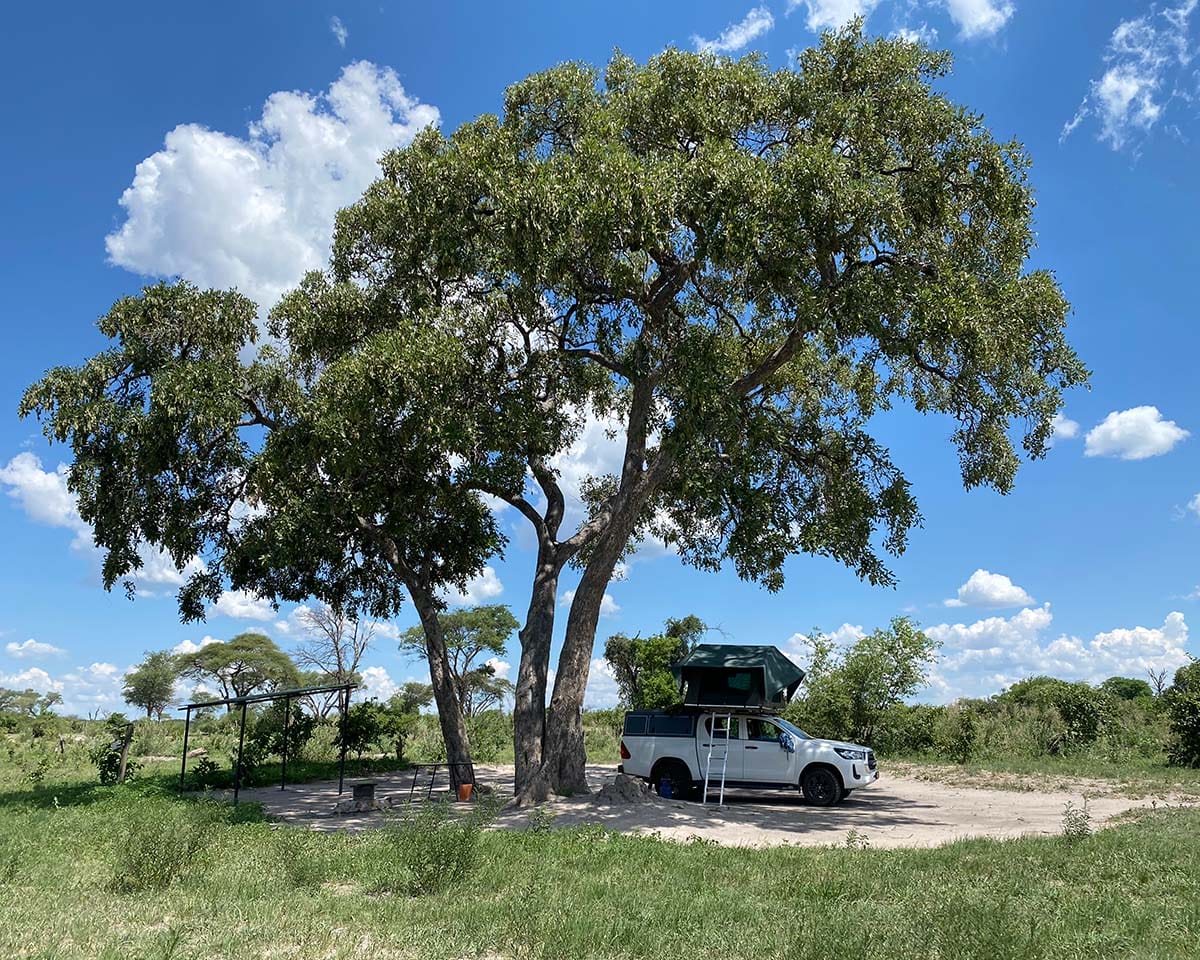
or call us
+267 7752 8837
Whatsapp vocal, monday to friday, from 9h to 17h
Why choose this 4×4 self-drive trip?
The bird route is a nature based journey where the terrain does not present great difficulties but allows you to train driving a 4×4 vehicle. The ideal route for the first timers.
The diversity of accommodation and different levels of comfort offered allow this route to adapt to all budgets.
Apart from the traditional game drives, the Caprivi and Panhandle areas offer various activities such as hiking, fishing, boat trips and night safaris or walking safaris.
LIVE UNFORGETTABLE EXPERIENCES
Nature, culture, safari – there’s no chance of boredom on this itinerary combining a variety of experiences, ideally designed for family holidays and curious minds!
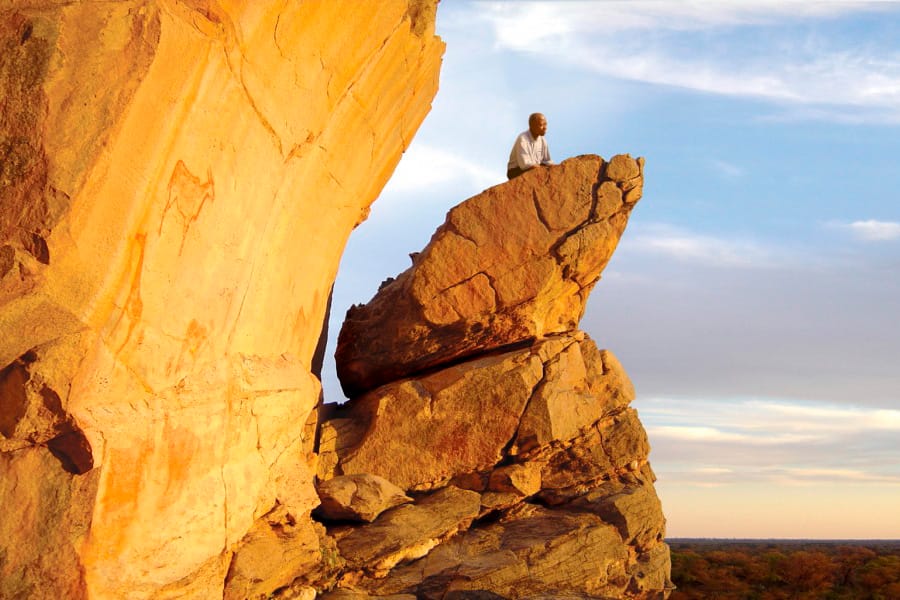
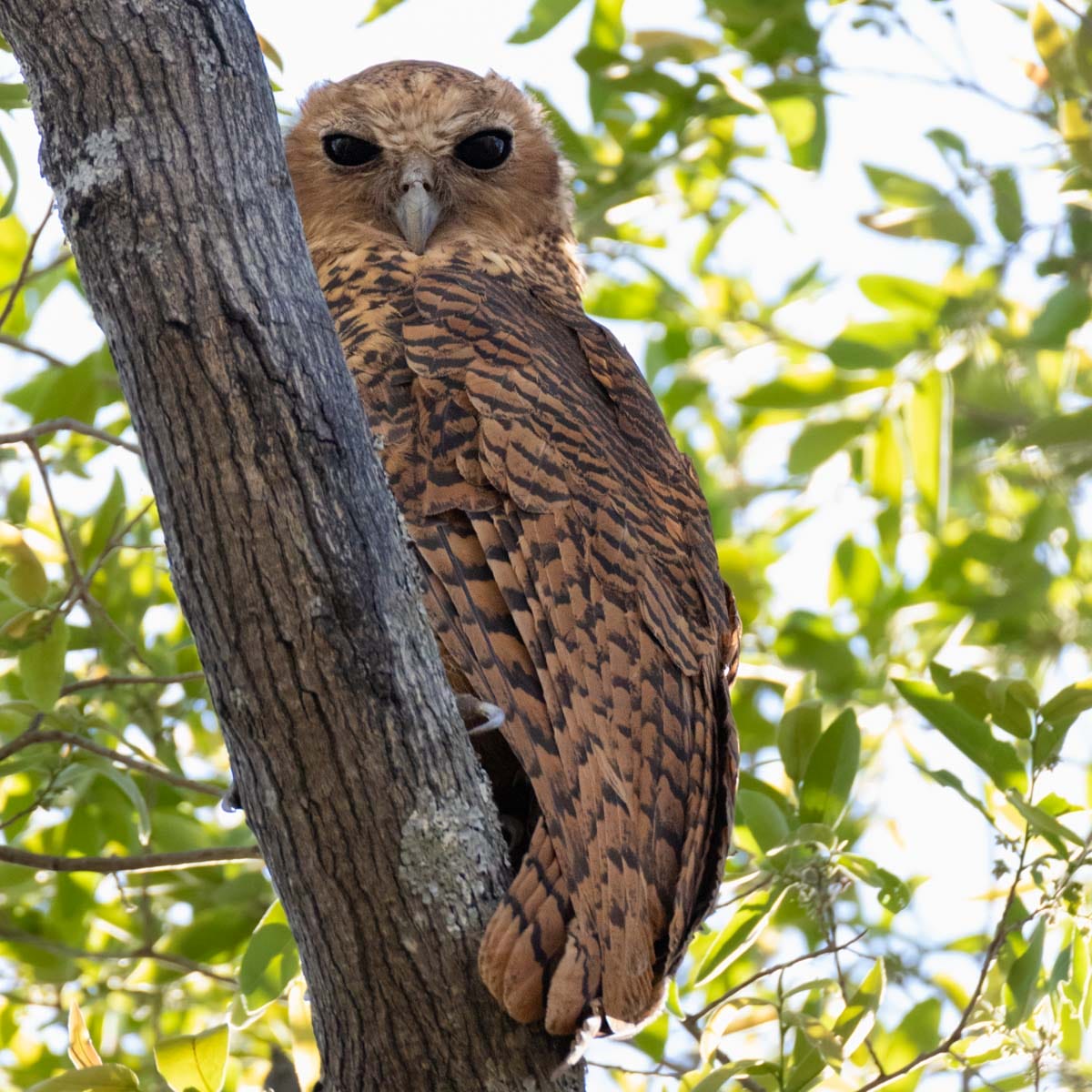

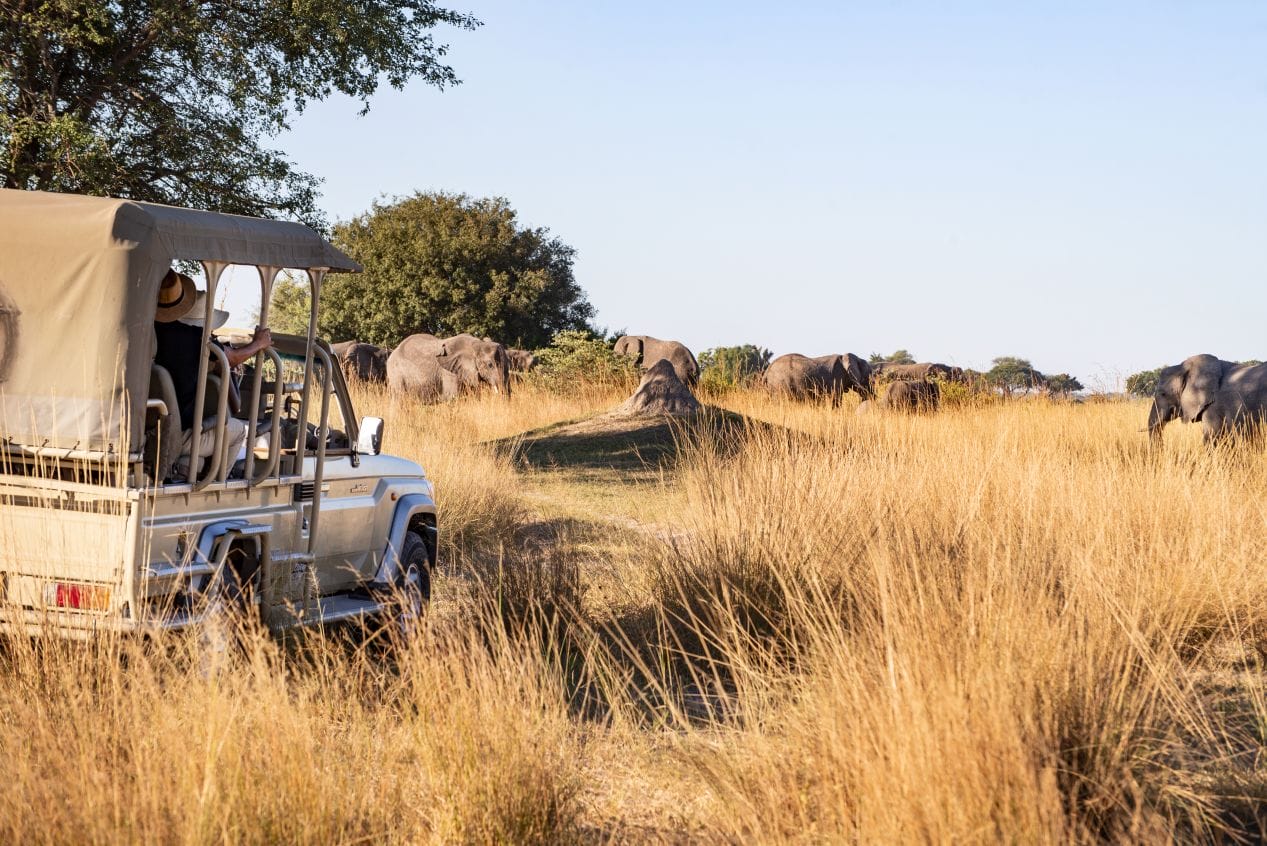
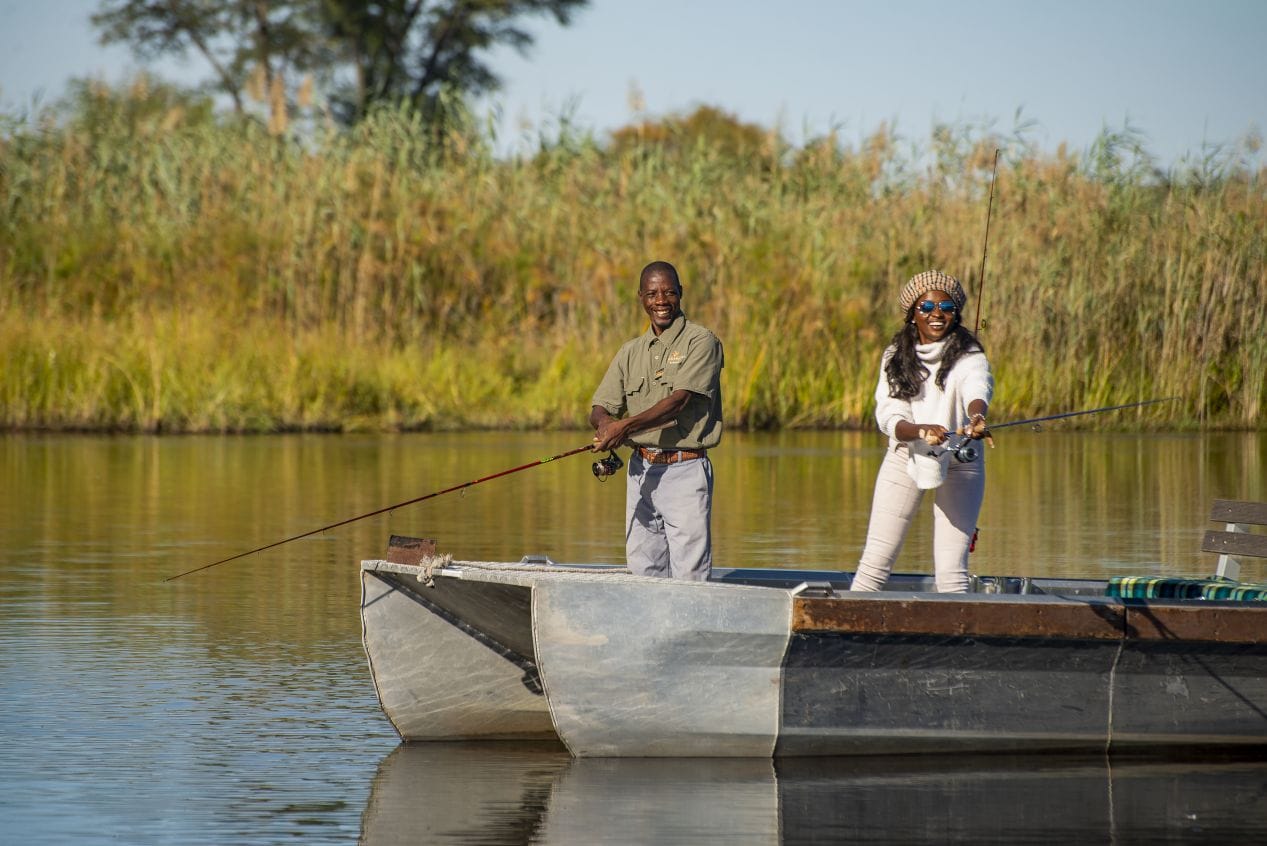
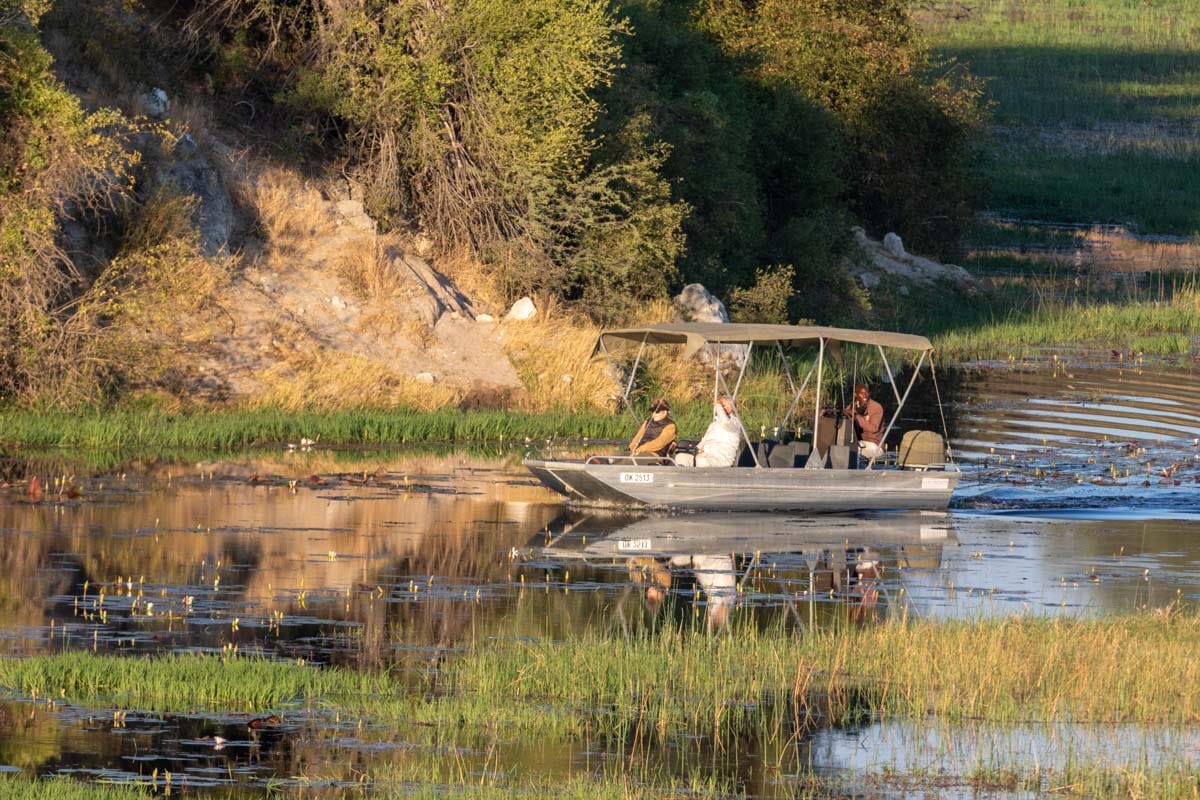
Exploring new horizons
OKAVANGO PANHANDLE • ZAMBEZI • CHOBE • NXAI & MAKGADIKGADI • VICTORIA FALLS
OKAVANGO PANHANDLE • ZAMBEZI • CHOBE • NXAI & MAKGADIKGADI • VICTORIA FALLS



